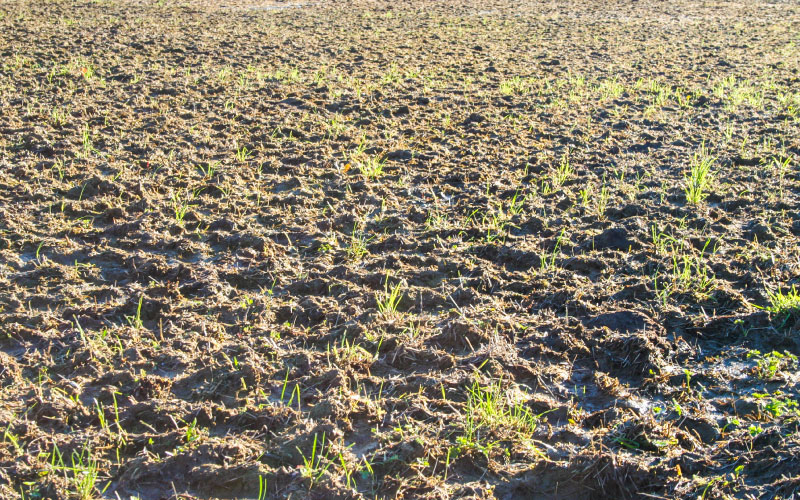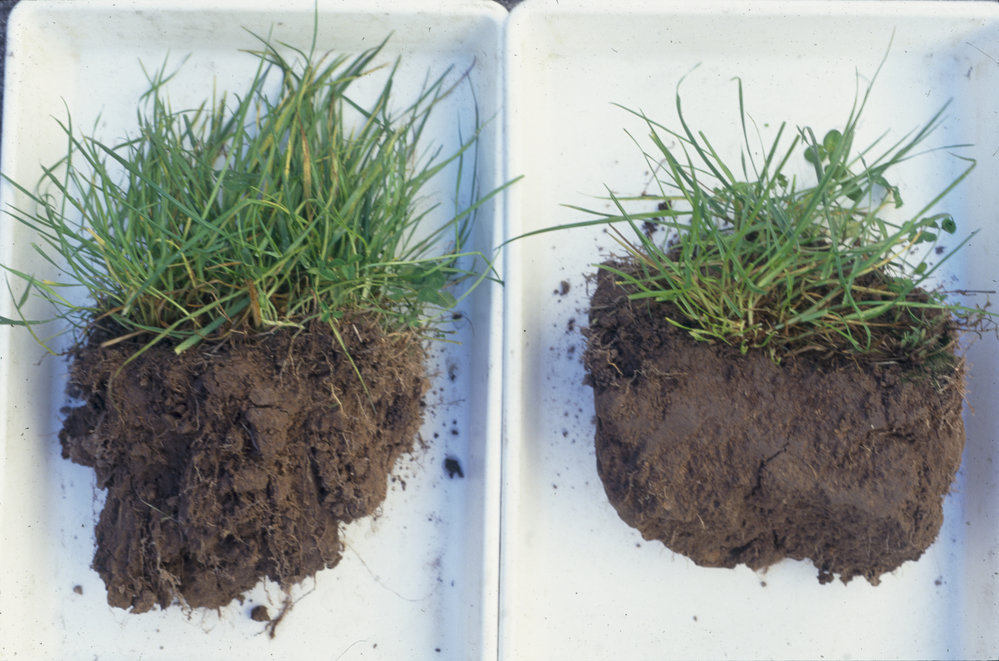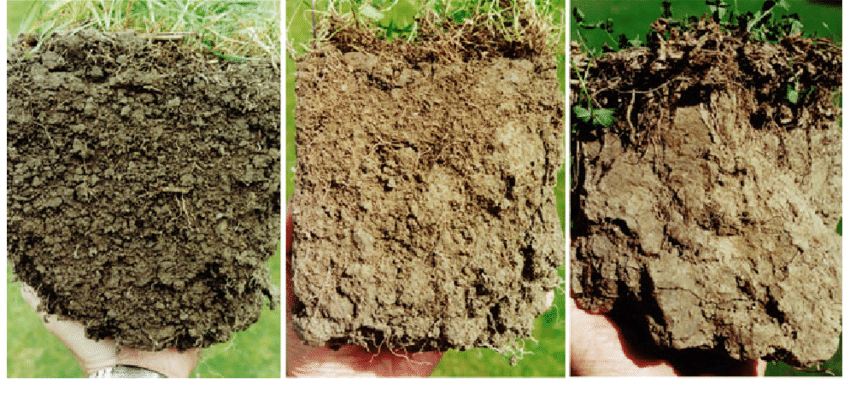Reduce pugging and compaction
What
Soils are vulnerable to pugging and compaction from stock and machinery when they are wet and intensively used.
Pugging occurs where soils are very wet (close to saturation), the penetration of animal hooves pugs the surface soil. Extensive pugging remoulds the surface soil and destroys large soil pores. During this process there can also be extensive tearing and burying of pasture plants. The resulting damage to plants and soil compaction limits subsequent growth and pasture yield. The effect of treading tends to create a negative cycle. If a soil is partially pugged early in the winter, then water will tend to remain on the surface for longer. As a result, the soil will remain softer and wetter and the hooves of grazing animals will do more damage during subsequent grazings than they would on undamaged soils.

Image Source: Marlborough District Council

Image source: AgResearch
Compaction can occur at lower soil moisture levels (around field capacity). This is because the soil is still plastic and malleable and can be compacted by treading of grazing animals and heavy machinery. Like pugging, compaction will destroy soil pores vital for plant growth.
Compaction reduces the volume of large pores in the soil, thus restricting the movement of water and air into the subsoil. This increases the susceptibility of the soil to waterlogging and anaerobic conditions, which can restrict plant root growth. In addition, compaction increases mechanical resistance to root growth. As a result of these factors, pasture production can be reduced.
Soil water content is the most important factor affecting the severity of compaction. Under very wet conditions pugging occurs causing serious damage to the soil close to the surface, as well as the pasture plants themselves. At or near field capacity, where the soil is plastic, soil compaction often occurs. Whilst this damage is not always visible at the surface, it can occur to considerable depth (greater than 10 cm). Removal of stock from pasture during and shortly after heavy rainfall can significantly reduce treading damage.
Because of their weight, larger stock pose a greater treading pressure on the soil surface than smaller stock types. As a result, cattle hooves can be significantly more damaging to soil structure than sheep. Increasing the grazing intensity of animals will increase the degree of compaction and soil disturbance occurring. On grazed hill country, treading and the resulting disturbance of surface soil can result in increased losses of soil and nutrients through erosion and runoff. Erosion losses generally increase with increasing grazing intensity and are greater with heavier stock.

Image Source: Uwe Schindler
Why
The infiltration rate of rainfall (or irrigation) is significantly reduced if soils are pugged or compacted. This means the risk for runoff occurring is much higher. The overland flow risk assessment map is predicted on the inherent properties of the soil, such as soil texture, drainage, permeability, and the likelihood of the soil particle disaggregating (slaking) and dispersing. If soils are pugged or compacted the actual risk of runoff occurring is much higher.
To help minimise pugging and compaction:
Graze wetter paddocks before the wetter part of the season.
Good pasture cover gives better protection against pugging – build pasture cover leading into the wet season.
Graze land that is at risk of pugging with light stock.
Use the farm bike rather than heavy tractors and plan ahead to avoid tractor use in paddocks during the wet season.
Vary the depth and direction of cultivation annually – to avoid forming a plough pan.
Avoid working the soil when it is wet.
References
Drewry, J. J., Cameron, K. C., & Buchan, G. D. (2008). Pasture yield and soil physical property responses to soil compaction from treading and grazing—a review. Soil Research, 46(3), 237-256.
Houlbrooke, D. J., Drewry, J. J., Monaghan, R. M., Paton, R. J., Smith, L. C., & Littlejohn, R. P. (2009). Grazing strategies to protect soil physical properties and maximise pasture yield on a Southland dairy farm. New Zealand Journal of Agricultural Research, 52(3), 323-336.